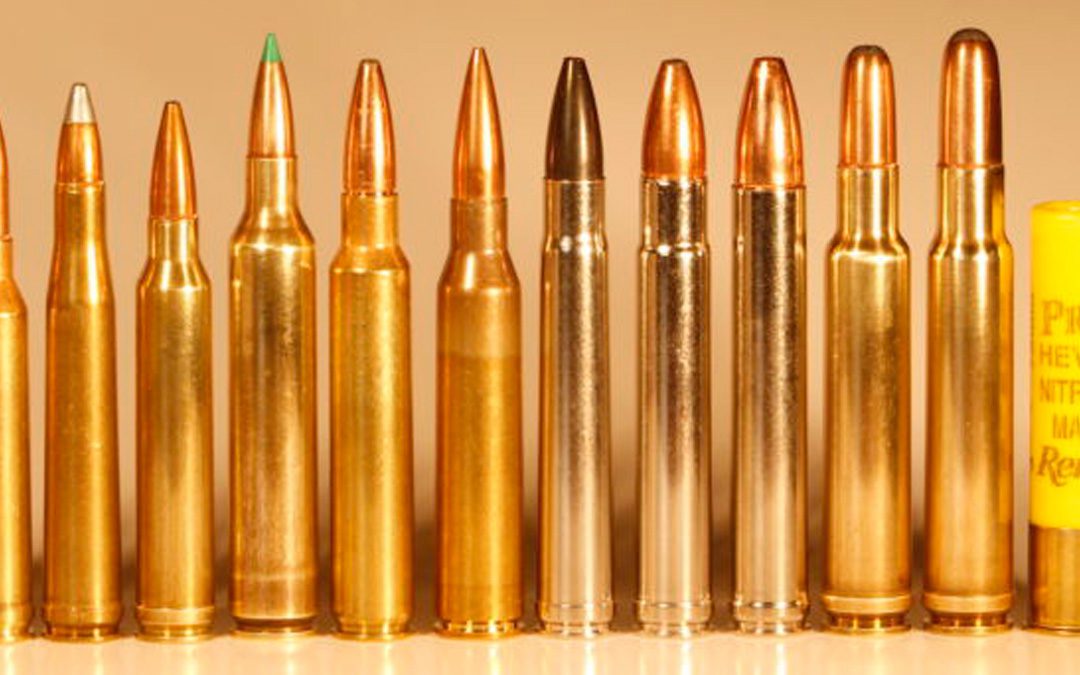You can’t blame Clint Eastwood’s character for all magnum cartridge misconceptions. They’ve been around for at least 100 years. And will probably remain for another hundred. But that shouldn’t stop us from trying to correct them and concentrate instead on magnum bullets.
- Magnum cartridges do not, will not, and can not blow 150-pound animals off their feet, let alone through doors and walls as depicted by Hollywood.
- A magnum cartridge will not kill your game deader than dead, every time, with a single blow.
- Magnums will not double the speed or power of standard cartridges.
- Magnums will not do almost everything we’ve been led to believe they’ll do — except kick hard.
Will The Real Magnum Cartridge Please Stand Up?
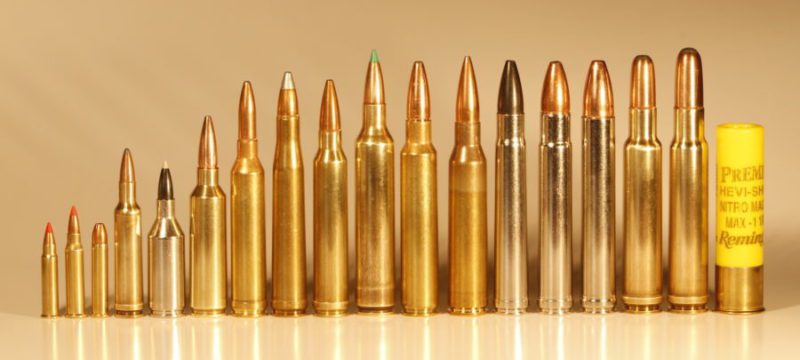
So what’s a magnum cartridge? Everything from a tiny .17 Hornady Magnum Rimfire to a relatively low-velocity 20-ga. shotshell, as it turns out. Magnum cartridges are more about naming than actual performance. To its credit, the 17 Winchester Super Magnum (2nd from left) really is the fastest, most powerful long range rimfire cartridge on the market, as this video details.
So let’s cut to the chase. There is no clear definition of what constitutes a magnum cartridge. Magnums are whatever their makers say they are. Thus we have the 222 Remington Magnum that is less powerful than the non-magnum 22-250 Remington. And the 22 Winchester Magnum Rimfire much, much weaker than both of them. We have the 300 Dakota non-magnum that is more powerful than the 300 Winchester Magnum. And we have many magnum shotshells that drive loads of pellets as slower velocities than do many standard shells.
Even magnum cartridges that are faster and more powerful than standard cartridges of the same caliber (like the 300 Winchester Magnum compared to the 30-06 Springfield) are only marginally more powerful. The 300 Win. Mag. will push a 150-grain spire point 3,300 fps. The 30-06 will drive it 3,000 fps. Zero both at 200 yards and at 300 yards the 30-06 bullet will drop 7 inches, the 300 Win. Mag. bullet 5.6 inches. You gain less than 1.5 inches of flatter trajectory.
Wind drift? There’s a 1-inch difference. With energy you gain a bit more advantage. The magnum bullet will keep 2,200 foot pounds at 300 yards, the 30-06 just 1,790 foot pounds. But if you think a deer, or even a moose, is going to walk away because the bullet that hit him in the heart, spine, or lungs was only carrying 1,790 foot pounds of energy, you haven’t shot many game animals.
Why Magnum Cartridge Power Barely Matters
Bullets kill by breaking down vital tissues, the organs necessary for life. They don’t need lots of energy to do this, as any bowhunter can tell you. So don’t buy a magnum because you think it kills harder, faster, and more thoroughly. Buy it because it compensates for poor range estimation. Yes, that’s its only significant benefit over standard rounds. It shoots flatter, extending maximum point blank range by 30 to 100 yards. But if you know your trajectory curve and have a laser rangefinder, even this advantage is almost superfluous these days.
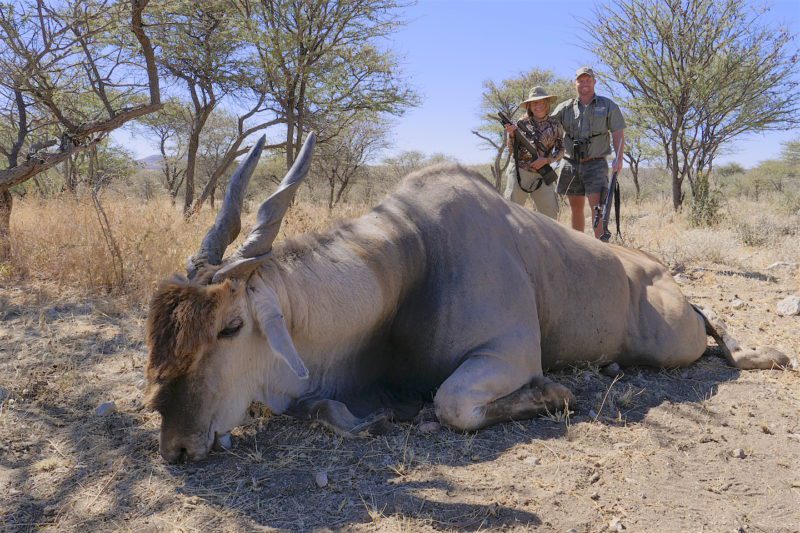
This eland bull weighed an estimated 1,750 pounds, yet it fell to a single Federal Premium 180-grain Nosler AccuBondlaunched by a Savage M110 chambered for the non-magnum, plain Jane 30-06. PH Werner von Seydlitz of Immenhofsafaris.com guided Betsy Spomer to this old Namibian bull. Eland venison is one of he most highly prized in Africa and can be found in many supermarkets and restaurants.
Although the first “magnums” were announced way back in the 19th century and were made famous by Roy Weatherby in the mid-20th century, they are enjoying a 21st century re-flowering. People just can’t resist the idea of bigger being better. The extra-long, extra-powerful 30-378 Weatherby Magnum was released to the public as a legit factory round in 1996. The equally big 300 Remington Ultra Magnum followed in 1999. Hot on its heels came 7mm, 338 and 375 caliber versions. Then out popped a flurry of short, fat magnums like 300, 270, 7mm, and 325 Winchester Short Magnums and the 300 and 7mm Remington Short Action Ultra Magnums (now nearly extinct.) Ruger jumped in with its excellent 375, 300, and 338 Ruger Compact Magnums in 2007 and 2008. Winchester really pushed the small magnum cartridge envelope with its 223, 243 and 25 Winchester Super Short Magnums.
Nosler enter the fray with its 26, 28, 30, and 33 Nosler cartridges. No magnum in those titles, yet each pushes near-record velocities in each caliber.
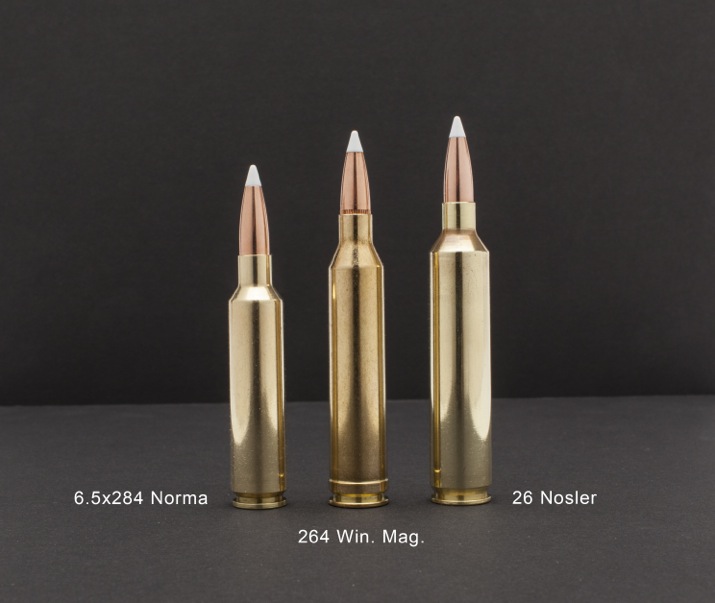
The 264 Win. Mag. adds about 100 fps MV to the 6.5×284 Norma’s MV, justifying its Magnum title. But the “non” magnum” 26 Nosler adds nearly 200 fps to the 264 Win. Mag. and is not called a magnum!
In the rimfire world Hornady had a hit with its 17 Hornady Magnum Rimfire. Winchester countered with a much more powerful 17 Winchester Super Magnum rimfire. It seems the magnum wars never end. Some come and quickly go, some hang around for a few years, and some become standards.
This will probably continue, but — I’m guessing here — at a much more leisurely pace. Why? Because gun and ammo makers long ago designed and brought to market all the firepower anyone needs to terminate any species on Earth. Until Jurassic Park-style genetic re-engineering brings T. Rex back to life, we won’t be needing a more powerful 300, 338, 375, 416, 450 or 50 magnum.
Why The Magnum Cartridge Will Give Way To “magnum Bullets”
Instead of new magnum cartridges, we’re going to see more and more “magnum” bullets. That’s the future of hunting ammo.
Magnum bullets? I think I can explain. The trend toward extreme range shooting as advocated by gunmakers like Gunwerks in Wyoming is gradually enlightening shooters/hunters to the reality of ballistics and Newtonian physics. In order to deliver a bullet accurately to 1,000 yards, you don’t need more horsepower. You need more efficiency. Bullet efficiency. With a sleek, ballistically efficient bullet, you can make a puny 6.5-284 Norma, 6.5 Creedmoor, 260 Remington, or 6.5 PRC outshoot a 30-378 Weatherby with an inefficient bullet. And with a lot less recoil. Which means you shoot more accurately. And accurate bullet placement, not magnum horsepower, is what kills game.
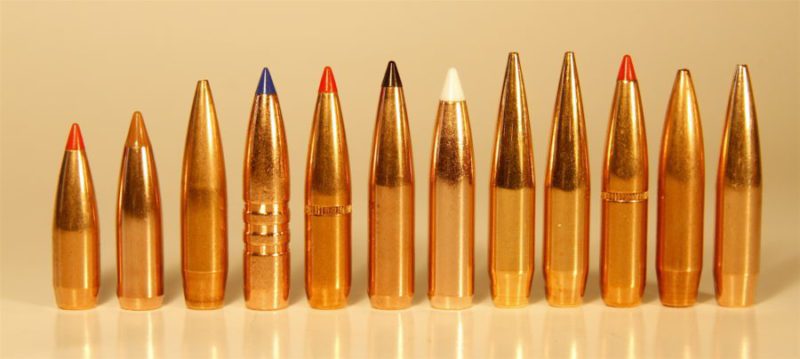
Here’s the deal: Drive a 140-grain or heavier bullet — of any caliber — with a B.C. rating of .600 or higher at 3,000 fps or faster and it will carry sufficient energy to terminate elk and moose at 1,000 yards, probably even 1,300 yards. That’s magnum bullet performance. This doesn’t mean I advocate or even suggest anyone shoot game that far away. But if the bullets are capable of this performance at 1,000 yards, imagine what they’ll do at 300 yards. That gives legitimacy to the term “magnum bullet.”
Examples Of Magnum Bullet Performance
The Berger .264, 140-grain VLD Hunting bullet has a B.C. rating of .612. A 264 Winchester Magnum can shove it 3,000 fps. At 800 yards it will be carrying 1,100 f.p. of energy. If you don’t think that will terminate a deer, consider this: a 170-grain 30-30 Winchester at 150 yards is packing just 975 f.p. energy. I’ve never heard anyone complain about the 30-30 bouncing off deer at 150 yards.
A 7mm Remington Magnum or 7mm WSM throwing a 168-grain Nosler AccuBond Long Range bullet (B.C. .616) at 3,000 fps can shoot flatter and deliver more energy than a 300 Win. Mag. throwing a 190-grain bullet (B.C. .491) 3,000 fps. So why would anyone want the extra recoil in the 300?
What does this tell us about magnums? As hunters begin to study, learn and appreciate ballistics and bullet performance, we will increasingly gravitate toward smaller caliber cartridges that shoot highly efficient, magnum bullets at high velocities. These may well be magnum cartridges, but they’ll be 6.5mm and 7mm magnums, possibly even 6mm magnums. But probably not 300 and 338 magnums. And certainly not 300 and 338 Super Ultra Magnum Magnums on steroids that kick like double barreled mules without delivering appreciably more, or even needed, benefits.
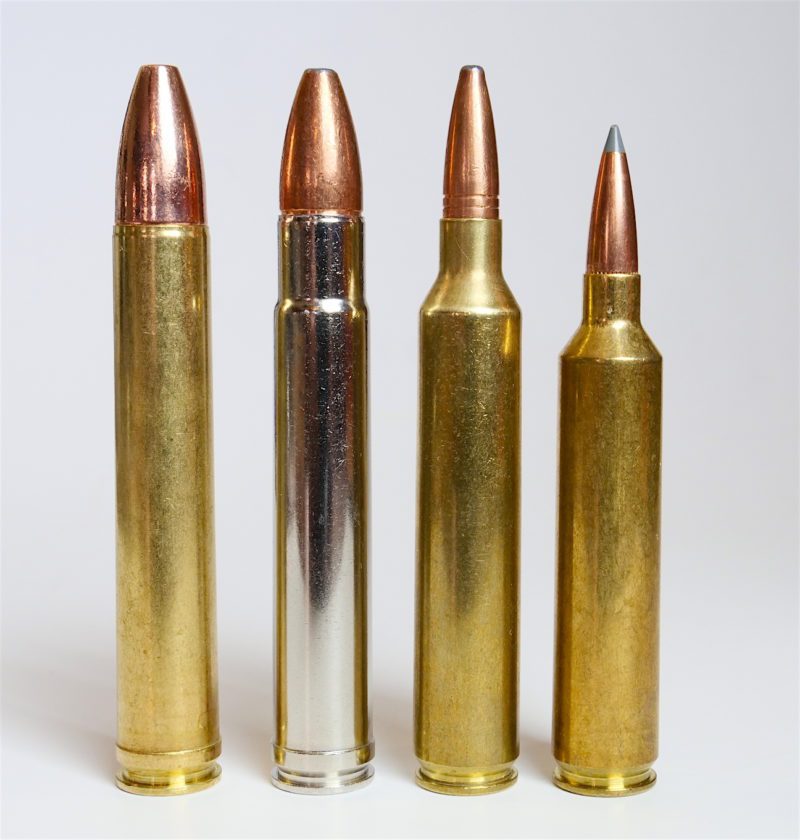
The 458 Lott cranks out more MV and energy than the 458 Win. Mag., yet isn’t called a magnum. The 416 Rem. Mag. beside it shoots a 100-grain lighter bullet using a lighter powder charge, yet produces slightly more muzzle energy. And the long 7mm RUM and 26 Nosler, despite throwing bullets roughly 70% lighter, deliver more energy at 500 yards than either of the ‘elephant” rounds. Are they all magnum cartridges or not?
If you’ve been lusting after a big, super magnum cartridge, go ahead and buy one. If you want to become a more deadly shot at all ranges, from reasonable to ridiculous, with less noise and recoil, start shooting magnum bullets. They are the wave of the future.

